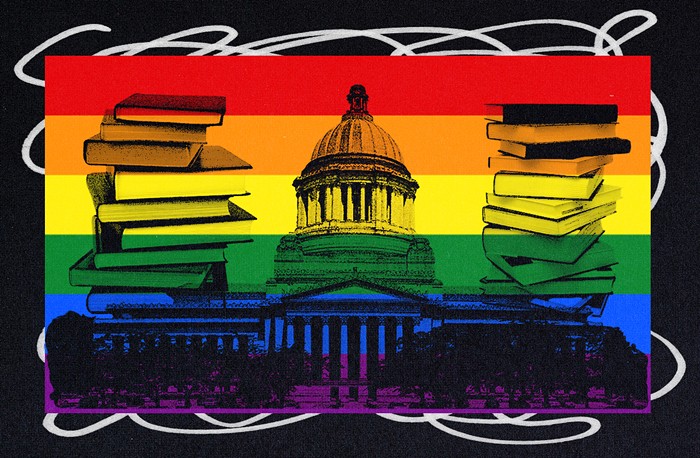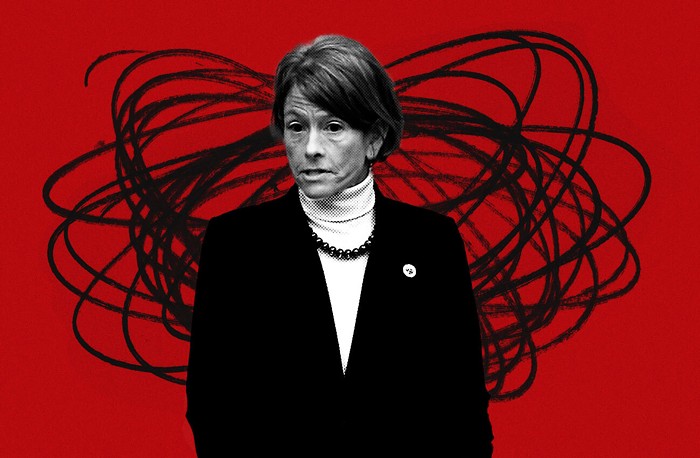
Mayor Jenny Durkan and King County Executive Dow Constantine embraced a distinctly triumphant tone at a press conference Thursday announcing preparations for the end of bus access to the Downtown Transit Tunnel. Durkan called the impending changes an “exciting moment” and Constantine said they were a “milestone in our region’s transportation history.”
Seattle’s commuters might have some very different choice words when buses are kicked out of the tunnel later this month.
Starting March 23, seven different bus routes that service 830 bus trips picking up 18,000 riders every weekday, according to King County Metro, will be expelled from the downtown bus tunnel and pushed onto downtown’s streets. The new bus traffic will flood onto avenues that are already gridlocked in rush hour thanks to thousands of other bus riders and private vehicles. It’s the next phase in the so-called “Seattle Squeeze” and it has the potential to cause transportation disruptions that could ripple throughout the region.
Seattle's commuters will soon test how well our government has prepared for the end of underground bus service in Seattle.
Durkan and Constantine, speaking side by side at a press conference Thursday at the transit tunnel’s south entrance in the International District, seemed the most proud of changes they are making to how passengers will board bus routes that get moved from the tunnel to street level. Passengers will be able to use all bus doors while boarding buses along Third Avenue, the busy bus corridor that is taking much of the brunt of the new surface level bus traffic. That means passengers will be able to tap their Orca cards before boarding instead of needing to form one single line to pay the driver at the front of the bus.
This is already the case for the city’s six “Rapid Ride” express buses, and Constantine said implementing the new boarding method would reduce the amount of time buses wait at stops by 20 percent. King County Metro said this boarding change would work out to adding 30 more trips per hour to Third Avenue, which already handles 42 different bus routes that carry 180,000 passengers a day. Constantine claimed Thursday that Third Avenue is already the “busiest transit corridor in the country.”
Only 21 of the 31 bus stops along Third Avenue already have the Orca readers installed. Metro employees will stand at the remaining 10 stops with mobile Orca card readers until the card reading machines are installed.

King County Metro will also add additional bus trips to 15 routes affected by the changes. Constantine said this would “relieve overcrowding on some of the most popular routes in the county.”
Durkan said the city will also be closely watching traffic during the transition with incident response teams ready and even the possibility of adding more bus lanes to the downtown grid.
“As more buses come onto the city streets we have to do everything we can to speed up those buses so people can get to and from where they need to get,” Durkan said. “That’s one reason we will continue to have real-time monitoring of our streets during this period so if we need to spring up new bus lanes we can do it.”
The 1.3-mile-long downtown transit tunnel was built in 1990 and has held bus service since its creation. In 2009, Sound Transit’s Link Light Rail started service in the tunnel, forcing buses to share the double-wide tunnel with trains. Sound Transit was already planning on kicking buses out of the tunnel by 2020 to make room for the increasing number of trains running on the expanding light rail network, but the timetable was sped up after the county sold the Convention Center Station to the Washington State Convention Center in 2017. The convention center is now expanding into a new facility thus cutting off bus access to the tunnel’s north entrance and exit.

The single-file boarding method took 58 seconds while the all-door boarding method took only 28 seconds. The crowd of transit staff oohed and aahed and I even heard a “that’s amazing” as they realized that this second boarding method, which is expected to save Third Avenue from becoming a bus hell, cut the boarding time by more than half.
The demonstration beat Constantine’s own estimation that all-door boarding increases efficiency by 20 percent. Will this latest case of the Seattle Squeeze also beat expectations and turn out better than anyone expected?
We’ll soon find out.



















